Chocolate brands from the subcontinent are announcing themselves on the global stage. Sharmila Vaidyanathan looks at the growth of this niche industry and maps its origins.
As published in the Inkline on October 31, 2020.
Nitin Chordia was at his desk, one busy afternoon in 2007, munching on a bar of imported chocolate when an email caught his immediate attention. He got to work right away, completely forgetting about the chocolate in his mouth. After ten minutes, he realised that he was tasting berries but had no recollection of eating one.
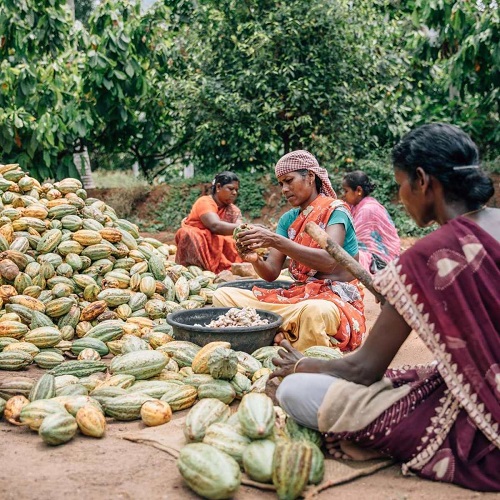
The ingredient list on the chocolate bar also had no mention of berries, which made Chordia reach out to the makers in Italy who informed him that because he let the piece of chocolate sit on his palate for that long, he was able to experience the flavour notes of the cacao (the seed from which cocoa and chocolate are made).
Today, it is the other way around, with Chordia getting calls about why a piece of chocolate tastes the way it does. He is the country’s first certified chocolate taster, having gained certification from the International Institute of Chocolate and Cacao Tasting.
He is also the founder of Cocoashala – a centre based in the South Indian city of Chennai that offers bean-to-bar chocolate making courses. Chordia also has its own brand of chocolate, Kocoatrait, which launched the world’s first zero-waste chocolate bar.
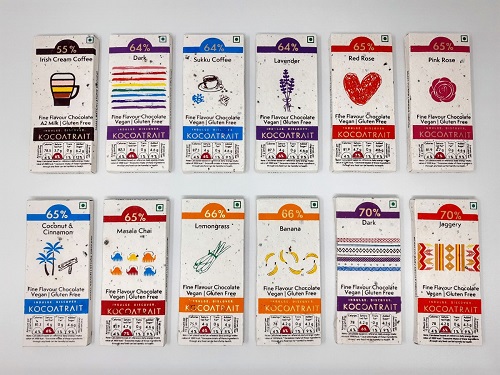
Chordia’s tryst with chocolate began a few years after his eureka moment when he decided to do a deep dive into the world of chocolate and went on an impulsive backpacking trip across Belgium. It was also during this trip that he met his mentor and world-renowned chocolate educator Martin Christy.
He went on to finish both Level 1 and 2 of the chocolate tasting course, eventually setting up Cocoashala in 2015 and launching their chocolate brand, Kocoatrait, at the Amsterdam Chocolate Festival in 2019.
“This is the front face of our institute. We want to show people that you can do this. We built the brand from scratch. We know that the chocolate industry itself is very unsustainable. The amount of milk and sugar that is used plus the amount of plastic in packaging is way beyond comprehension. We would like our brand to be aspirational and not inspirational,” explains Chordia.
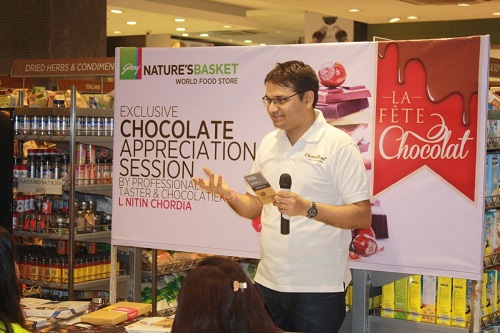
Kocoatrait’s chocolates are made from cocoa beans sourced from farmers in South India. They also use locally sourced ingredients for the flavouring. Of the 12 chocolate variants that they manufacture, 11 are vegan and the one chocolate that uses milk as an ingredient is made using A2 milk – the first in India to do so.
Beyond the chocolate itself, the packaging is done using cocoa husk and reclaimed cotton, and the aluminium foil on the inside is biodegradable. Plus, water-based ink is used for the printing which is done by an organisation that works with differently-abled people.
While Chordia’s attempts are aimed at creating an all-encompassing sustainable chocolate brand, the makers of bean-to-bar chocolates in India are often seen pushing boundaries to show what a bar of chocolate can represent. For some, it is about exalting the virtues of the star ingredient itself.
Soklet is India’s first tree-to-bar chocolate, where all the cacao comes from one farm. This family-run enterprise was created by Karthikeyan Palaniswamy and his brother-in-law Harish Manojkumar. Being an organic farmer, Manojkumar was growing cacao in his farm in Pollachi, Tamil Nadu, and selling it to the local markets. As they thought of ways to add value to the farm, they decided to make a chocolate that was representative of their cacao. Enter Soklet.
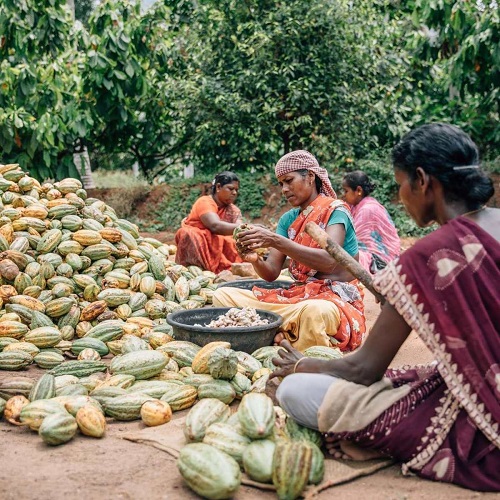
India’s bitter-sweet chocolate history
Bean-to-bar, tree-to-bar, farm-to-bar, single-origin, artisan – for the unaware consumer, these terminologies can be overwhelming and confusing. But just for a moment, step away from the mass-produced chocolate and ask yourself: what does chocolate taste like? Well, we wouldn’t know because what we are experiencing in the form of a piece of chocolate is the sugary rush or the overpowering flavour additions that mask the original taste. Not that the sugary rush is unwelcome, but just like wine and coffee, depending on where the cacao grows, there will be certain inherent flavours to explore.
One of the earliest bean-to-bar chocolate brands in India, Naviluna Artisan Chocolate (formerly known as Earth Loaf), best explains this concept on their website. “Our journey begins from the cacao bean and ends at the chocolate bar ready for you to enjoy. It gives us far greater control over the quality, sustainability and the ability to develop complex flavours in our chocolate.”
Historically, chocolate has not been too popular among Indian farmers, and this is not without reason. They faced the brunt of the global cocoa price crash between the years 1979-80. Despite having export quality products, the decision of Cadbury India Pvt Ltd. (which initiated cacao cultivation in Kerala, India) to import from other countries and eventually withdraw from the state led to farmers cutting and burning their crops.
The market stagnated for the next two decades, coming back to life in 2003 and showing significant growth in 2009. According to the Directorate of Cashewnut and Cocoa Development, farmers across the states of Tamil Nadu, Kerala, Andhra Pradesh, and Karnataka produced about 23,981 metric tonnes of cocoa between 2018-19. Intermediaries like Plantrich Agritech Pvt Ltd and GoGround Beans & Spices Pvt. Ltd. are also working on connecting the farmers to sustainable chocolate makers, diversifying the market for them.
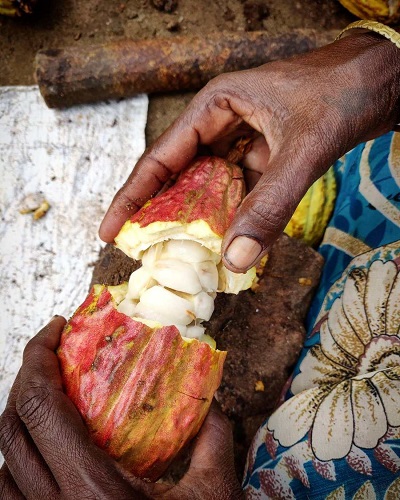
Not only are we growing more chocolate, but we are also consuming more chocolate. Mintel’s 2017 report on the growing Indian chocolate market made us realise that we had munched on about 228 thousand tonnes of chocolate in the year before. Last year, Mintel’s report screamed – Serious Chocolate Business – as it stated that the chocolate industry In India will grow at a compound annual growth rate of 10% between 2019-2023.
Of course, no one could have predicted that in the midst of the hyphen there would be a pandemic. In these difficult times, talking about a luxury food product may seem a little Marie Antoinette, but a recent survey by the Indian Institute of Management-Lucknow revealed that 42% of the respondents residing in tier I and tier II cities stocked up on chocolate during the lockdown. Looks like we needed our comfort food fix more than ever.
Chocolate’s growing market is attributed to the rising preference for sugar-reduced chocolates and interesting flavour combinations. Take Kocoatrait for example; you will find regular dark chocolate on their shelf, and you will find some very unique flavours like the Sukku coffee (dry ginger coffee) chocolate. In fact, it is this flavour pursuit that led Arun Viswanathan to explore the land of bean-to-bar chocolates.
His brand Chira’m explores unique Indian flavours like mango lassi (a sweet Indian drink made from yoghurt) and moringa in a chocolate bar. Viswanathan argues that it is time to understand cacao’s value as a food ingredient, which is why at Infusions, his cafe located in Coimbatore, Tamil Nadu, he serves dishes like Nib Crust Malai Paneer Pizza and a Cacao Mac n Cheese.
Bean-to-bar now on par?
When you have so much gone behind your bar of chocolate, consumer interaction and education becomes a big part of your business module. As Palanisamy explained, the basis of Soklet’s popularity was completely built on their ability to interact with people about what they were doing.
“During our first two years, we did not even have a website, and we were not available anywhere online. We did all of that late last year, even though we did not actively focus on the online aspect of our business. Honestly, I think it is a criminal waste of money, resources, and effort if we are shipping a 200-rupee bar of chocolate to somebody across the country. This is a temperature-sensitive product, plus think about all the packaging,” said Palaniswamy.
Chordia on the other hand explains that the consumers they found through the online portals never got what their bar of chocolate represented. “People did not understand what we were trying to do here. I got a call from someone who complained that the packaging looked off. I tried to explain that it is paper-free, but to be honest, I don’t think it mattered to him.”
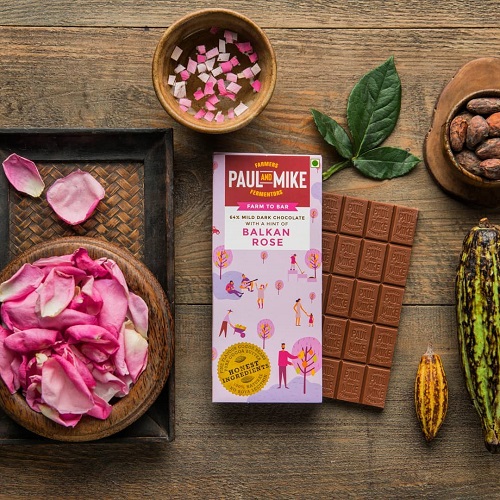
India’s chocolate market is dominated by brands like Mondelez and Mars Inc., but entrepreneurs like Chordia are optimistic that the bean-to-bar industry has immense potential for growth. Not only is there an interest in the product, but there is also a willingness to spend on artisan chocolates. Additionally, many of these brands like Chitra’m, Naviluna Artisan Chocolate and Paul and Mike have won awards at the International Chocolate Awards, putting Indian chocolate on the global map.
Although there is still some fascination for imported chocolates, Vikas Temani of Synthite and the brain behind its farm-to-bar chocolate brand Paul and Mike explains that many of the imported speciality chocolates do not have a high retail value in their own countries.
“There is an anomaly in the market,” said Temani before asking: “Why can’t we produce superior-quality chocolates using local ingredients, creating opportunities here and giving consumers value for their money?” This is the question that Paul and Mike aim to answer.
Taking to the virtual world
On July 7 2020, popular bean-to-bar chocolate brand Mason & Co conducted their first-ever virtual chocolate conference on Instagram to celebrate World Chocolate Day. The event list included not just virtual chocolate tasting sessions, but also collaborations with Subko Coffee Roasters and food bloggers and influencers.
It is a strange new world where we cannot break chocolate together, but of the many challenges that the bean-to-bar chocolate makers face, a significant challenge is how do they hand that bar of chocolate to a potential consumer while telling them their story.

Paul and Mike has already plunged into the collaborative approach as they have worked to create interesting products with like-minded brands. Their Stout Beer and Caramel Chocolate Pints made in collaboration with Simba stout beer did much better than they anticipated and was well received.
Paul and Mike has several collaborations in the pipeline, but Temani warns that this approach is something that requires a lot of research and background work. “Brands need to see credibility before they go down the path,” he explains.
“We have come to agree over the past five years that there is no exact alternative to physical consumer interaction,” says Devansh Ashar, Founder and Partner of Pascati Chocolates – a bean-to-bar chocolate brand which is also USDA Organic & Fairtrade compliant. Ironically, Ashar launched Pascati after his chocolate pop-up in Mumbai became a hit.
“There is no better way to put your point across than to interact with your consumer physically and also inform them of the people behind the brand. With the pandemic, a lot of brands are heavily relying on social media for consumer interaction. We will now be focusing on education through these channels. Our website is currently being revamped, and we will be promoting our brands more using various online channels.”
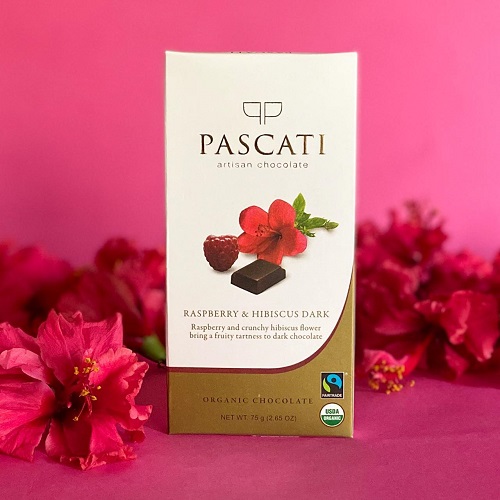
Others like Palaniswamy agree that it is just time to wait and watch. “We have to try the best we can to express using pictures and words. It is not a substitute for chocolate, but we just have to give it a shot.”
As for Chordia’s chocolate-making course? That goes online as well, as participants get not just instructions, but ingredients and equipment to become a “Micro-batch Bean to Bar Chocopreneur (Chocolate Entrepreneur)”.
What can I say? When life gives you cocoa beans… oh well!
